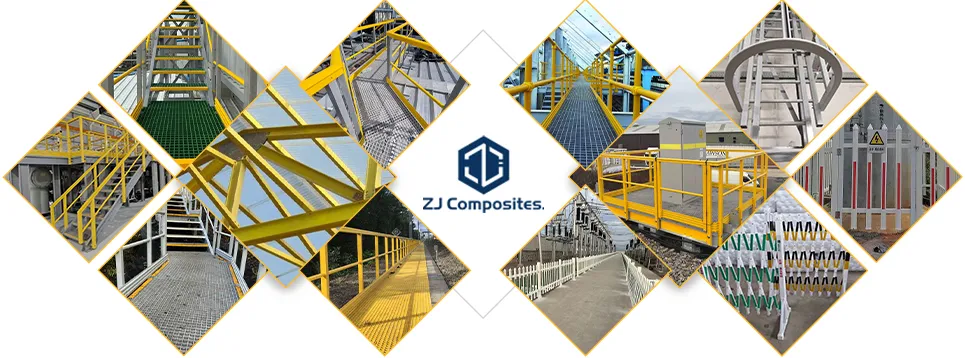loading...
- No. 9, Xingyuan South Street, Dongwaihuan Road, Zaoqiang County, Hengshui, Hebei, China
- admin@zjcomposites.com
- +86 15097380338
- Welcome to visit our website!
frp railing systems
Exploring FRP Railing Systems A Comprehensive Overview
In recent years, the construction and architectural industries have witnessed a significant evolution in materials, particularly with the introduction of Fiber Reinforced Polymer (FRP) railing systems. These innovative systems have emerged as a preferred choice for various applications, combining strength, durability, and aesthetic appeal. This article delves into the features, benefits, and applications of FRP railing systems, highlighting why they have become a popular choice for builders and designers alike.
Understanding FRP
Fiber Reinforced Polymer is a composite material made by combining a polymer matrix with fibers, which are often glass, carbon, or aramid. This combination results in a material that is not only lightweight but also boasts exceptional tensile strength and corrosion resistance. FRP materials are engineered to withstand harsh environmental conditions, making them ideal for outdoor applications such as bridges, walkways, and elevated platforms.
Key Features of FRP Railing Systems
1. Corrosion Resistance One of the standout features of FRP is its resistance to corrosion. Unlike traditional metal railings that can rust and deteriorate over time, FRP railings are impervious to moisture and chemicals, making them suitable for coastal areas and industrial environments.
2. Lightweight FRP materials are significantly lighter than steel or aluminum, facilitating easier installation and reducing associated labor costs. This lightweight property also contributes to lower transportation costs and simplified structural designs.
3. High Strength-to-Weight Ratio Despite its low weight, FRP offers a high strength-to-weight ratio, allowing for slim rail designs without compromising safety. This is particularly advantageous in applications where aesthetic considerations are paramount.
frp railing systems

4. Versatility FRP railings can be molded into various shapes and colors, providing architects and designers with freedom in their creative expressions. This versatility makes it possible to customize solutions that meet specific project requirements.
5. Low Maintenance FRP railings require minimal maintenance compared to traditional materials. They do not need regular painting or rust treatment, which further reduces long-term costs and labor.
Applications of FRP Railing Systems
FRP railing systems are employed across a wide range of applications
- Transportation Infrastructure FRP railings are used on roads, bridges, and public transit stations due to their strength, durability, and resistance to the elements. - Industrial Facilities Many factories and warehouses utilize FRP railings around platforms and walkways to enhance worker safety while minimizing upkeep. - Municipal Projects Parks, boardwalks, and public plazas benefit from FRP railings, which provide both safety and aesthetics without compromising the environment. - Residential Properties Homeowners are increasingly choosing FRP railings for decks and patios, capitalizing on their longevity and modern look.
Conclusion
In conclusion, FRP railing systems represent a significant advancement in construction materials, offering a combination of durability, lightweight design, and aesthetic versatility. Their exceptional performance in adverse conditions, coupled with low maintenance requirements, makes them an attractive option for a myriad of applications. As the demand for sustainable and resilient building materials continues to grow, FRP is poised to play an increasingly vital role in the future of construction and design. Whether for industrial, municipal, or residential use, FRP railings provide a robust and appealing solution that meets the modern demands of safety and style.
-
The Rise of FRP Profiles: Strong, Lightweight, and Built to LastNewsJul.14,2025
-
SMC Panel Tanks: A Modern Water Storage Solution for All EnvironmentsNewsJul.14,2025
-
GRP Grating: A Modern Solution for Safe and Durable Access SystemsNewsJul.14,2025
-
Galvanized Steel Water Tanks: Durable, Reliable, and Ready for UseNewsJul.14,2025
-
FRP Mini Mesh Grating: The Safer, Smarter Flooring SolutionNewsJul.14,2025
-
Exploring FRP Vessels: Durable Solutions for Modern Fluid HandlingNewsJul.14,2025
-
GRP Structures: The Future of Lightweight, High-Performance EngineeringNewsJun.20,2025
